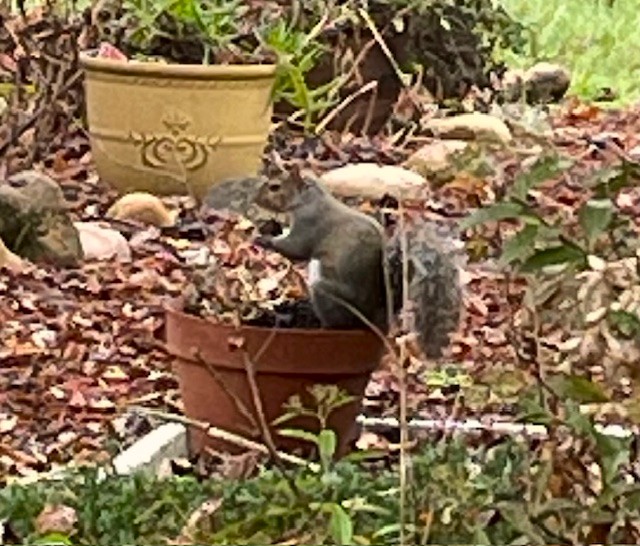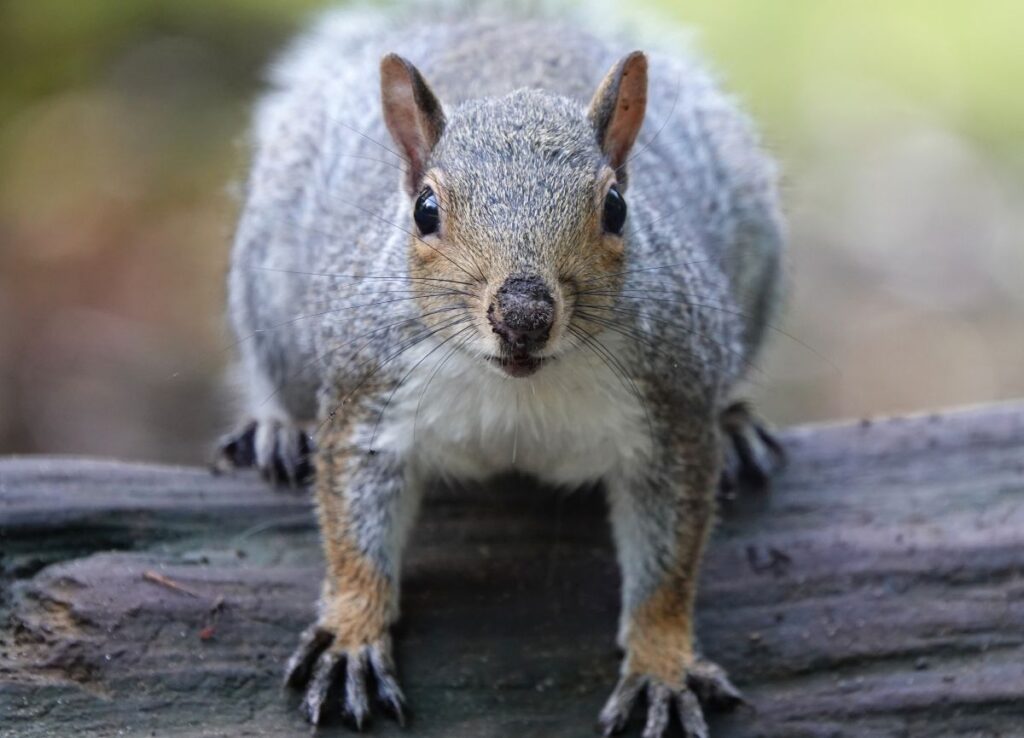Physical Address
304 North Cardinal St.
Dorchester Center, MA 02124
Physical Address
304 North Cardinal St.
Dorchester Center, MA 02124

This morning, I witnessed something fascinating from my home office view: a gray squirrel, holding a black walnut, perched on the edge of one of my planter pots. For two minutes, it held the walnut, licking it methodically. Then, it just stared ahead, still as could be, before finally cracking open the walnut and savoring the meaty bits inside.
I’ve seen plenty of squirrels darting about and burying nuts in my planters, but this quiet moment of focus left me wondering: What’s the deal with squirrels and their nuts?

Squirrels are nature’s hoarders, storing nuts to survive the lean winter months. They practice “scatter hoarding,” where they bury nuts in various locations to retrieve later. This instinctive behavior isn’t just survival—it’s a finely tuned skill.
When a squirrel buries a nut, it marks the spot with its sense of smell and memory. Research shows that squirrels remember the general vicinity of their buried treasure, using environmental landmarks to locate it.
But why the licking? Scientists believe that squirrels coat their food in saliva to help them identify their scent later. This behavior also explains why some squirrels pause after licking or burying a nut—they’re likely “recording” the location in their memory.
The stillness I observed could have been a moment of squirrel mindfulness, processing where and how to store its precious black walnut.

The gray squirrel I watched this morning is one of the most common squirrels in the Smoky Mountains, but the region is home to a few different types:
While Smoky Mountain squirrels behave similarly to their relatives across the country, the region’s dense forests and variety of nut-bearing trees provide an abundant buffet. Hickories, walnuts, and acorns are common targets for their caching.

Every spring, as I start planting in my pots, I inevitably unearth some of the nuts squirrels buried months earlier. This happens because squirrels scatter-hoard more nuts than they need, partly as a strategy for survival.
They can afford to forget a few (or maybe they’re just bad at math!). Interestingly, the nuts they miss often sprout into new trees, making squirrels accidental foresters and vital contributors to forest regeneration.
Despite the chaos squirrels bring to our planters and bird feeders, they’re incredibly intelligent. Studies have shown that squirrels can:
Watching that squirrel savor its walnut reminded me of the complex balance between nature and instinct. While I may not always like their constant digging in my planters, I can’t help but admire their resourcefulness.
The next time you spot a squirrel , take a minute to appreciate their nut-stashing behaviors. These clever little creatures are more than just cute; they’re key players in the ecosystem, helping forests grow and providing endless entertainment with their quirky antics.

“The squirrel hoards nuts and the bee gathers honey, without knowing what they do, and they are thus provided for without selfishness or disgrace.” — Ralph Waldo Emerson